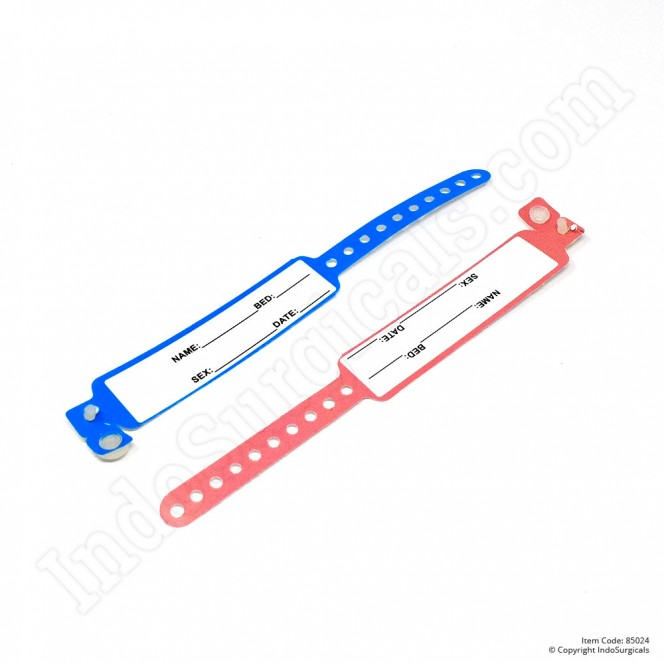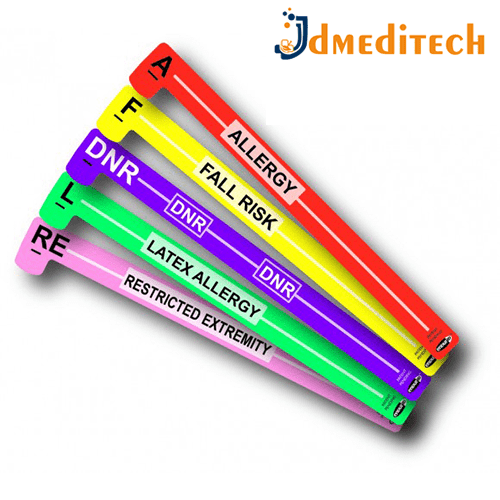Choosing the Right Components for Your Patient Identification Band: A Step-by-Step Guide
Choosing the Right Components for Your Patient Identification Band: A Step-by-Step Guide
Blog Article
How Patient Identification Band Plays a Crucial Role in Patient Management and Care
Patient Identification bands act as a vital gear in the detailed machinery of health care systems, working as a protect versus medical errors. As the frontline device for confirming Patient identification, these bands underpin vital procedures from carrying out the right medication to guaranteeing the appropriate individual goes through the assigned procedure. The extensive influence of such an ostensibly straightforward device on Patient safety and security, experience and results may surprise lots of, leaving one to contemplate the prospective improvements and technologies that might further improve their effectiveness.

Recognizing the Fundamentals of Patient Identification Bands
Regardless of the simpleness of their appearance, Patient Identification bands offer a critical function in medical care settings. These basic wristbands, frequently made of plastic or paper, hold a riches of info crucial for Patient administration and care. They generally display the Patient's full name, date of birth, and a special Identification number, serving as the main resource of Patient Identification. The bands may likewise show info such as allergic reactions or special treatment instructions, giving health care experts with immediate access to important details. Making use of these Identification bands is taken into consideration an universal method in healthcare, targeted at ensuring Patient safety and security and precision of care delivery. The efficiency of Patient Identification bands counts greatly on constant usage and precise info input.
The Function of Patient Identification Bands in Lowering Clinical Errors
A staggering number of clinical mistakes take place as a result of Patient misidentification, emphasizing the vital role of Patient Identification bands. These straightforward, yet critical, tools, aid health care companies in properly determining people, thus reducing the likelihood of errors. These bands, often equipped with barcodes or QR codes, contain necessary Patient information such as name, age, and case history. This ensures that the appropriate treatment is provided to the appropriate Patient at the correct time. In high-stress environments where medical employees juggle various obligations, Patient Identification bands function as a quick and reputable recommendation. Significantly, they provide a protect versus misidentification, decreasing the threat of incorrect medical diagnoses, medication mistakes, and unnecessary procedures, thereby playing a crucial function in minimizing clinical errors.
Enhancing Patient Safety And Security With Identification Bands

The Impact of Patient Identification Bands on Patient Experience
Almost all patients in medical care settings experience the usage of Identification bands during their treatment trip. These bands, commonly worn around the wrist, have an extensive impact on the Patient experience. They act as a consistent, noticeable pointer of the Patient's identity and medical problems, assuring patients that they are identified and looked after. This basic yet essential device can substantially decrease anxiousness, particularly in big medical facilities where the Patient might engage with numerous doctor. These bands help with smooth shifts in between different treatment areas, making certain smooth continuity of treatment. Occasional inaccuracies or discomfort associated with bands can negatively impact Patient complete satisfaction. Health care service providers have to guarantee accuracy and convenience in using Identification bands.
Future Developments and Innovations in Patient Identification Bands Technology
While current Patient Identification bands have actually confirmed effective in boosting care, the perspective of technological advancements assures even higher improvements. Arising technologies, such as radio-frequency Identification (RFID) and Quick Reaction (QR) codes, supply a new level of precision and performance. RFID tags can supply real-time Patient area monitoring, while QR codes can save detailed Patient information obtainable by means of smartphone scanning. Furthermore, assimilation of expert system can make it possible for computerized Patient information evaluation, anticipating prospective health and wellness threats and enhancing therapy plans. Biocompatible materials are additionally being explored to increase Patient convenience. These advancements not only strengthen Patient web safety and security however likewise improve medical care procedures. Hence, future innovations in Patient Identification bands hold considerable possibility in revolutionizing Patient care.
Final thought
Patient Identification bands are an important property in health care, ensuring accurate Patient Identification and minimizing clinical mistakes. These devices enhance Patient safety and security, increase confidence in healthcare systems, and enhance Patient experiences and results. With the possibility for future advancements in Identification band modern technology, their duty in Patient management and treatment is established to come to be even much more vital, strengthening their relevance in the delivery of effective and secure health care.
How Patient Identification Band Plays an Essential Duty in Patient Management and Care
An incredible number of medical errors occur due to Patient misidentification, highlighting the important role of Patient Identification bands. patient identification band.Undoubtedly, the usage of Patient Identification bands substantially enhances Patient safety and security in healthcare setups. Thus, future innovations in Patient Identification bands hold considerable possibility in changing Patient treatment
Patient Identification bands are an important possession in health care, guaranteeing precise Patient Identification and decreasing look at this site medical errors.
Report this page